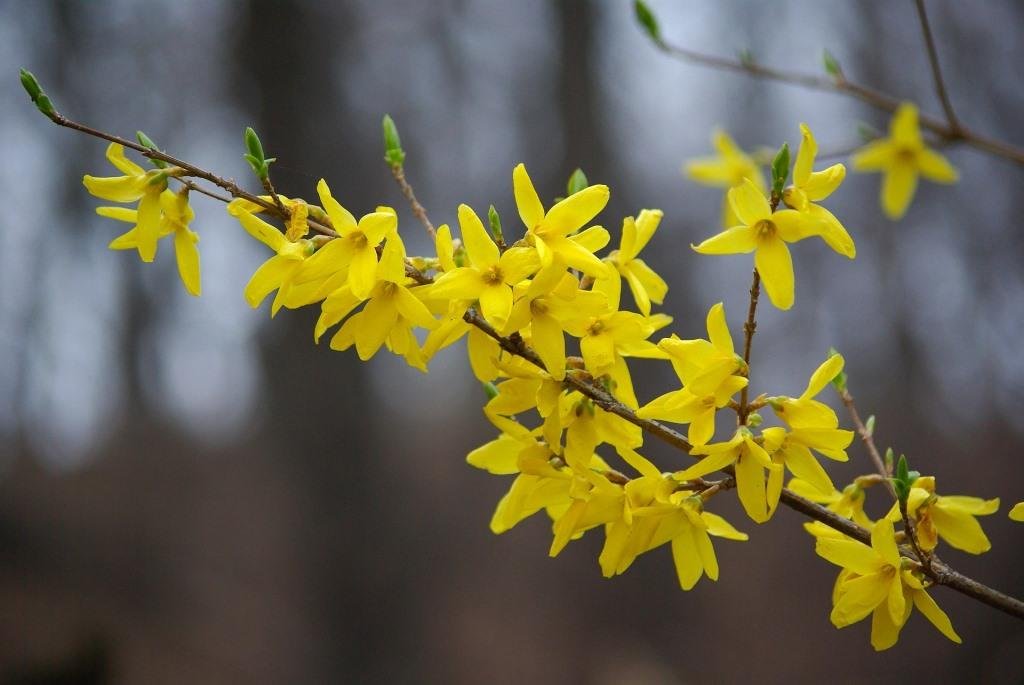I spotted a single open flower on my Forsythia this week, a sure sign that spring is almost here. Bring it on!
Forsythia, commonly known as “Yellow Bells,” are old-fashioned, indestructible plants that spread to form large thickets. They are among the earliest of shrubs to bloom. Their arching stems are covered with unscented yellow bell-shaped flowers for several weeks before leaves emerge. Plants bloom on prior year’s wood, so prune thoughtfully. Do not shear into tight meatballs. Instead, use hand pruners to remove entire stems at ground level.
Forsythia (pronounced for-SITH-ee-ah) is hardy in zones 6-8. Its arching stems will reach ten feet in height, with an indefinite spread. It is not choosy about soil type or pH. It is easily transplanted, and rarely bothered by insects or diseases. Deer nibble on young plants but tend to leave larger, mature specimens alone.
In full bloom, this Forsythia hedge looks like a yellow ribbon winding its way through the garden.
Forsythias make a good informal hedge where area is sufficient. Avoid siting them in locations where their aggressive expansion might overtake weaker plants or invade the neighbor’s garden. Plant them in full sun for best flowering. Shrubs reach a height of feet. Dwarf forms are available, but these also spread vigorously.
Cut a few branches with swollen buds to force blooms indoors.


